ML Coursera 4 - w4: NN - Representation
Posted on 16/09/2018, in Machine Learning.This note was first taken when I learnt the machine learning course on Coursera.
Lectures in this week: Lecture 8.
Neural Networks
Check [this link](https://medium.com/datathings/neural-networks-and-backpropagation-explained-in-a-simple-way-f540a3611f5e) to see the basic idea of NN and forward/backward propagation.
- Algorithms try to mimic the brain.
- 80s, 90s (very old)
- activation function = sigmoid (logistic) $g(z)$
- (sometimes) $\theta$ called weights parameters
-
Neural network: first layer (input layer), intermidiate layers (hidden layer) and the last layer (output layer)
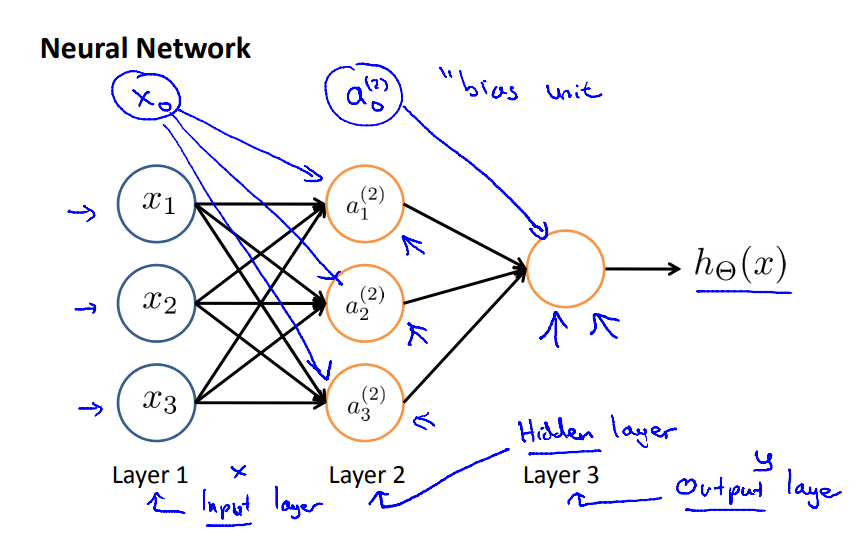
- Notations:
-
$a_i^{(j)}$ = “activation” of unit $i$ in layer $j$
$$ a_{\text{unit}}^{(\text{layer})} $$ - $\Theta^{(j)}$ = matrix of weights controlling function mapping from layer $j$ to layer $j+1$
-
$\Theta \in \mathbb{R}^{m\times n+1}$ where $m$ = number of unit in current layer, $n$ = number of units in previous layer (not include unit 0).
$$ \begin{align} \Theta^{(\text{previous})} &: \text{previous layer} \to \text{current layer} \\ \Theta^{(\text{previous})} &\in \mathbb{R}^{\text{current} \times (\text{previous}+1)} \end{align} $$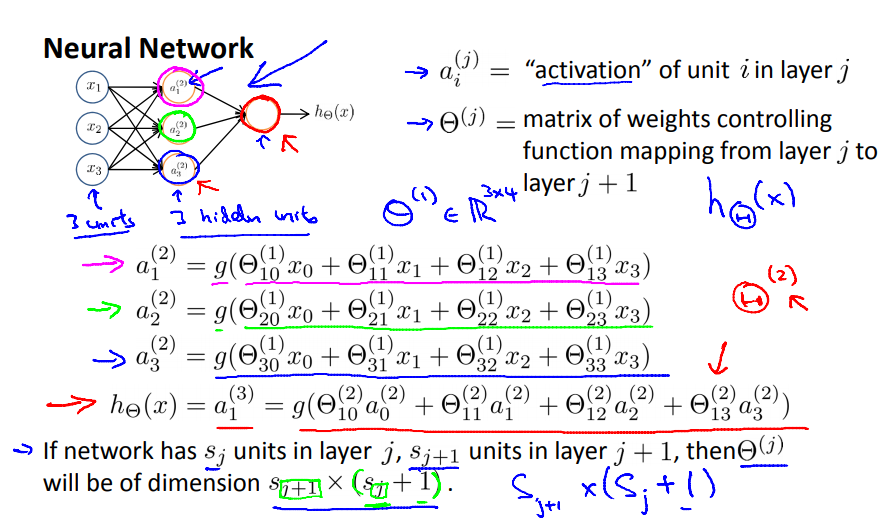 $$ a_{k\in \text{current units}}^{(\text{current layer})} = g\left( \sum_{i\in \text{prev units}} \Theta_{ki}^{(\text{prev layer})} a_i^{(\text{prev layer})} \right) $$
$$ a_{k\in \text{current units}}^{(\text{current layer})} = g\left( \sum_{i\in \text{prev units}} \Theta_{ki}^{(\text{prev layer})} a_i^{(\text{prev layer})} \right) $$
-
Forward propagation: vectorized implementation
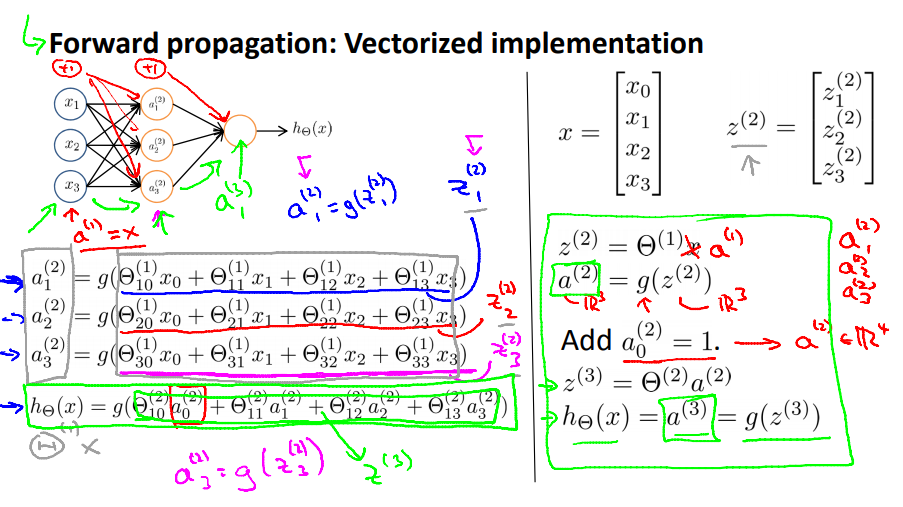
- Neural network is look like logistic regression, except that instead of using $x_1, x_2, \ldots$, it’s using $a^{(j)}_1, a^{(j)}_2, \ldots$
- Neural network learning its own features.
- Architectures = how different neurons connected to each other.
-
Final
$$ \begin{align} h_{\theta}(x) = a^{(j+1)} = g(z^{(j+1)}) = g(\Theta^{(j)}a^{(j)}). \end{align} $$
Examples and Intuitions I
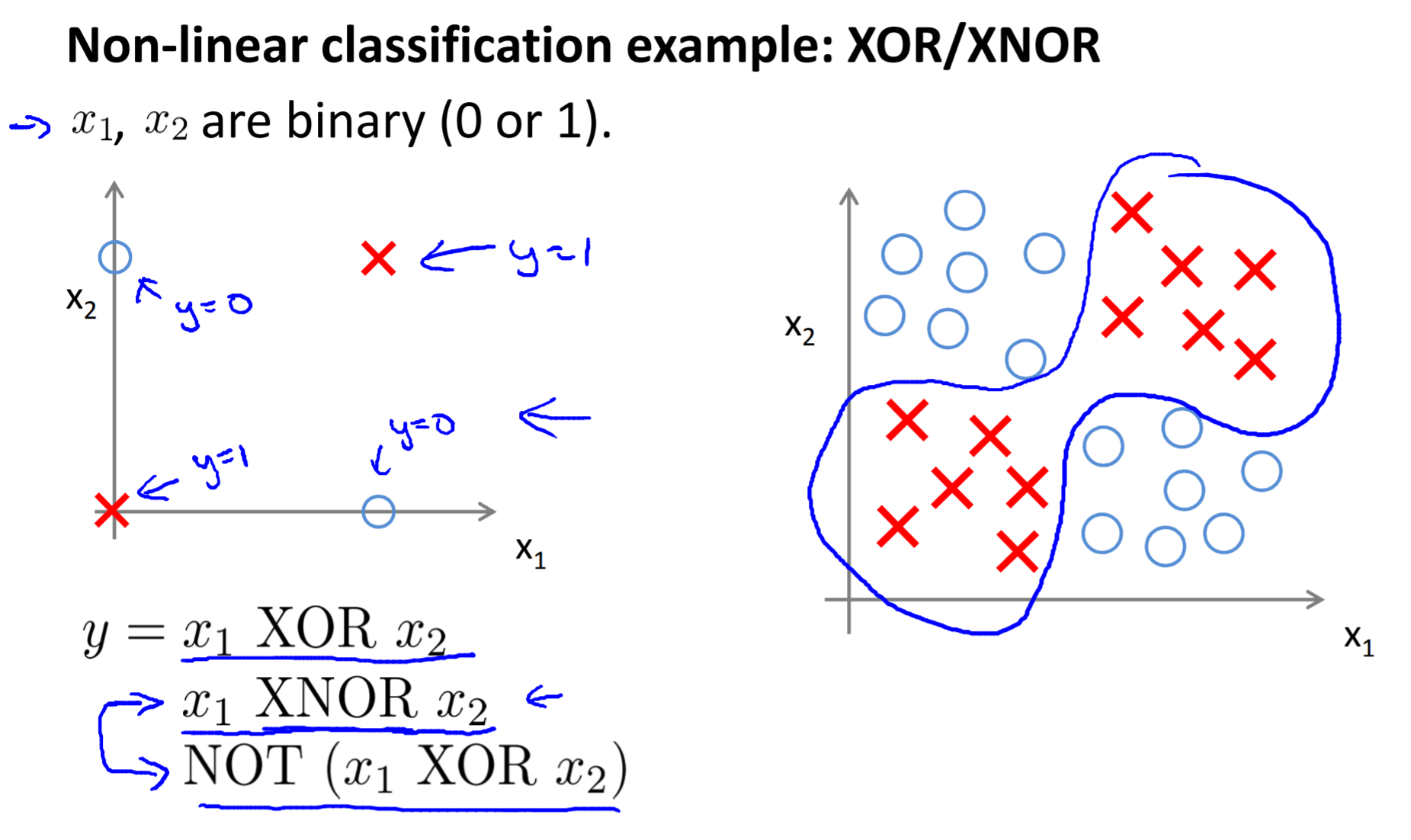
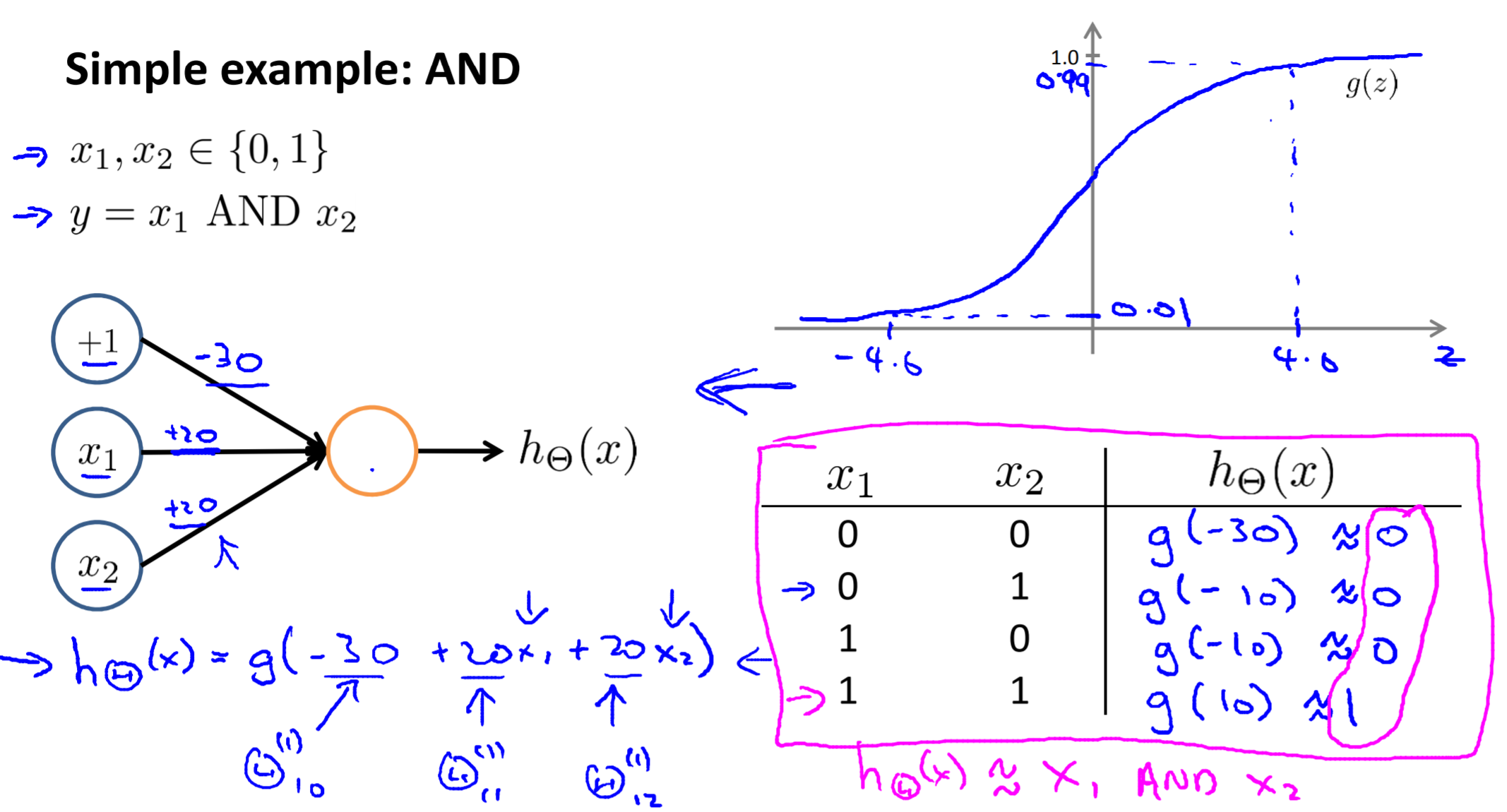
Examples and Intuitions II
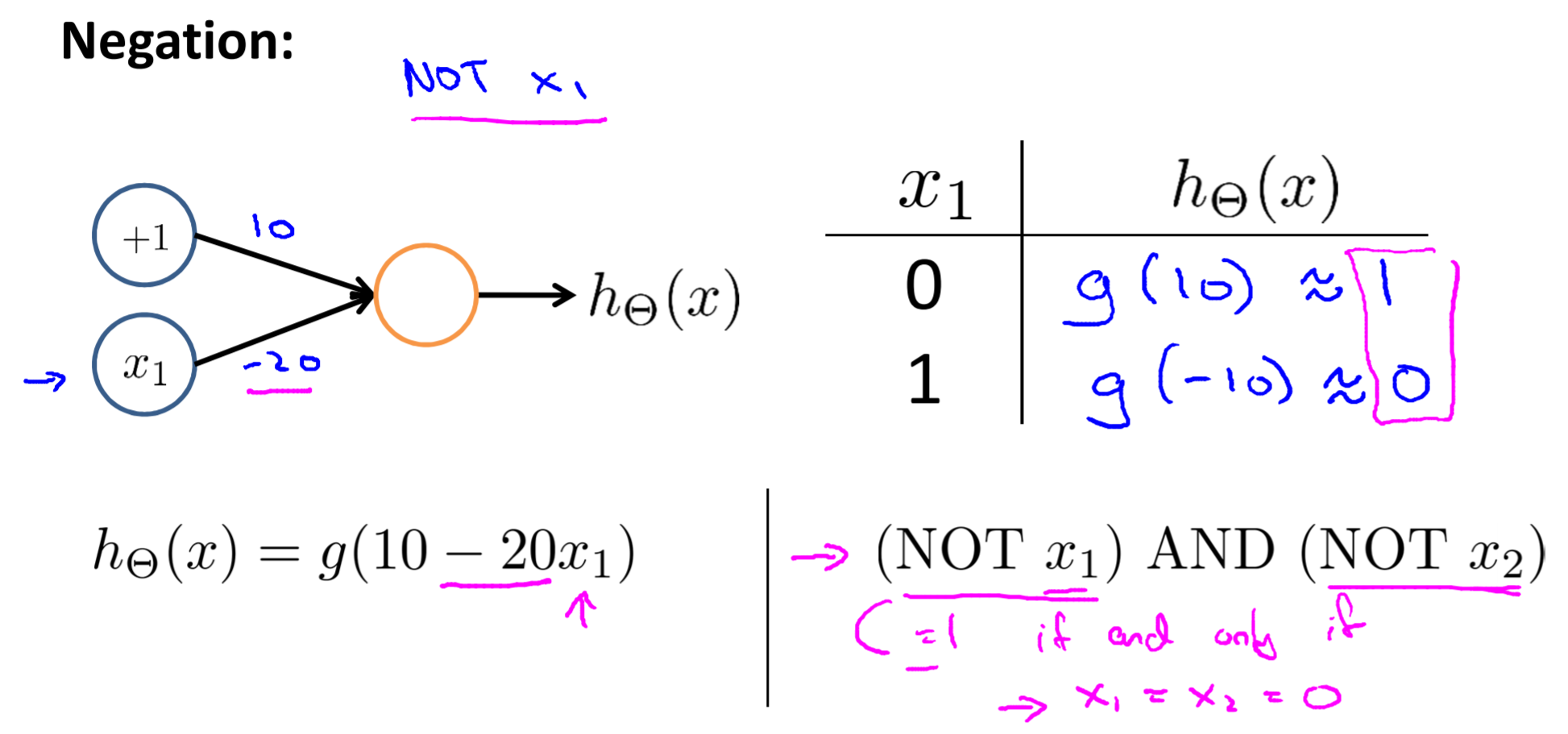
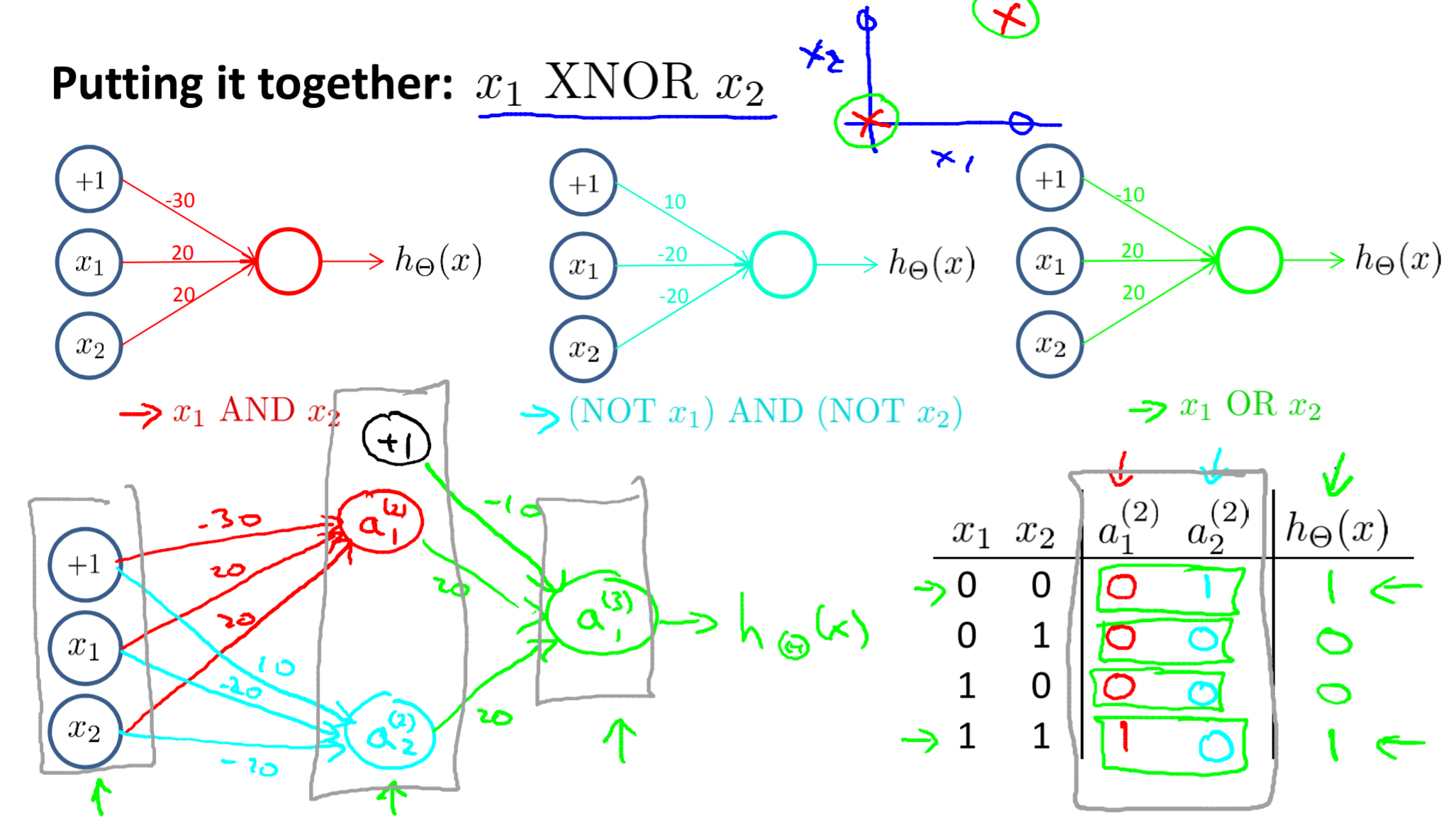
Multiclass classification
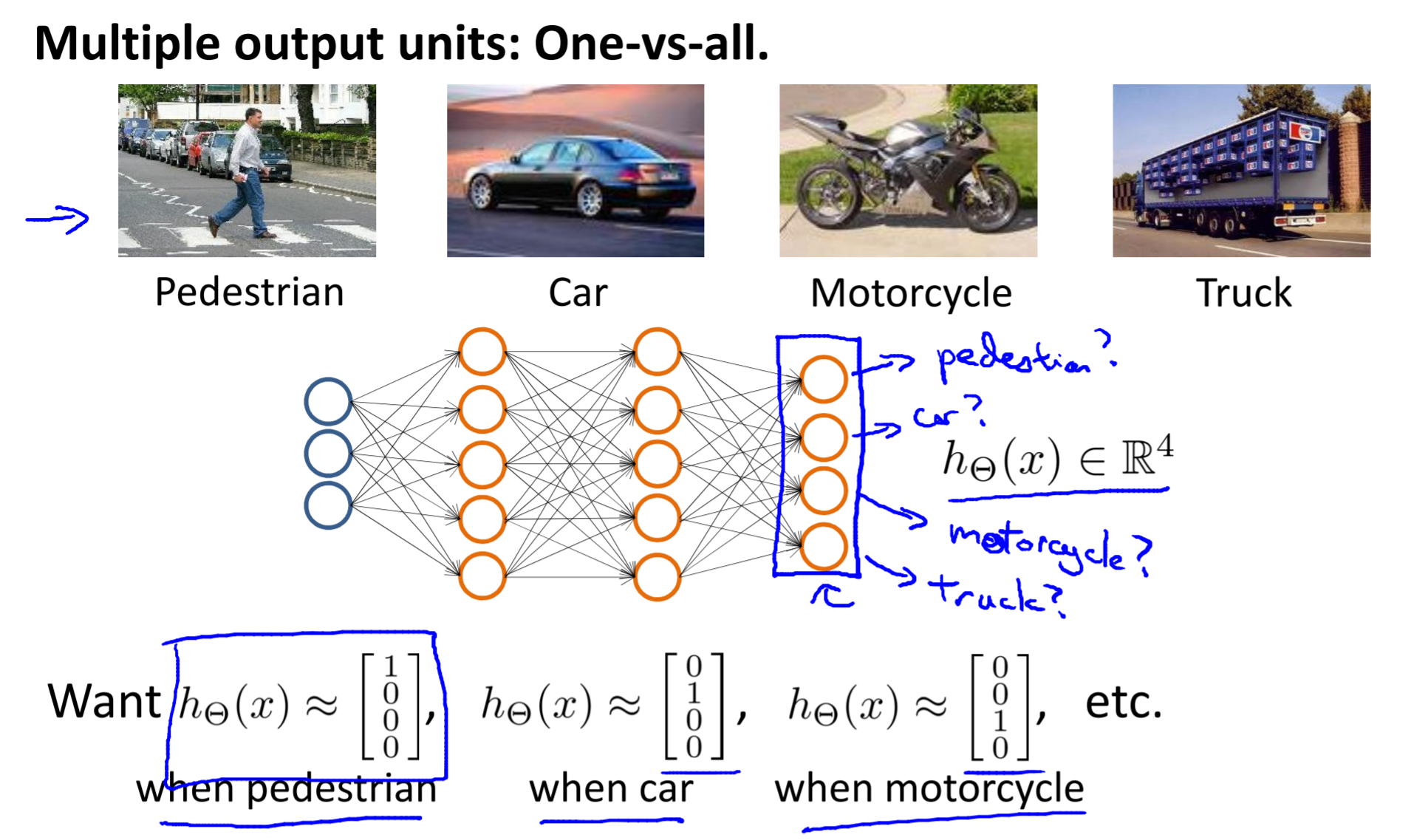
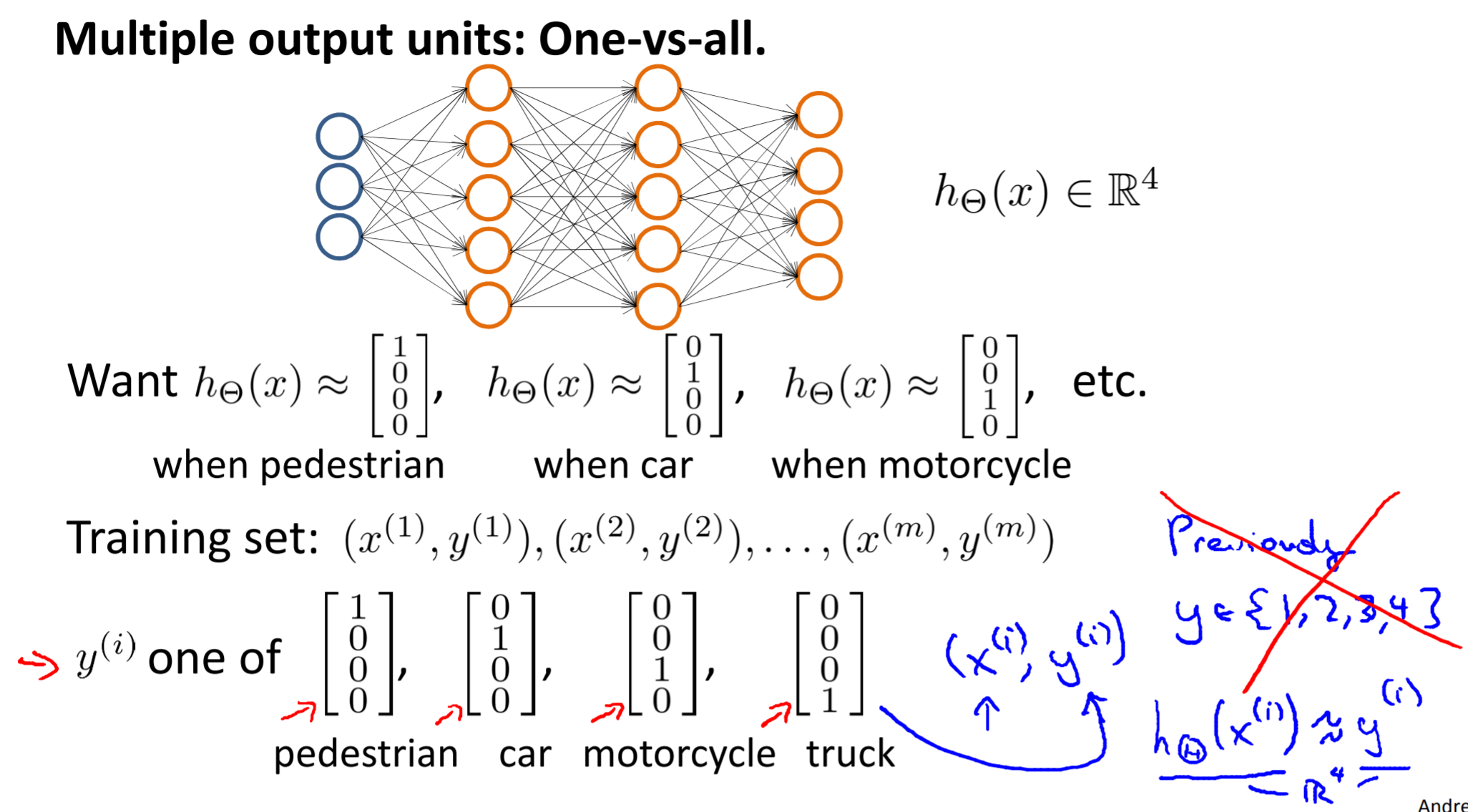
Exercise Programmation: Multi-class Classification and Neural Networks
-
lrCostFunction.mThis ex is the same with the one in the previous week.
h = sigmoid(X*theta); % hypothesis J = 1/m * ( -y' * log(h) - (1-y)' * log(1-h) ) + lambda/(2*m) * sum(theta(2:end).^2); grad(1,1) = 1/m * X(:,1)' * (h-y); grad(2:end,1) = 1/m * X(:,2:end)' * (h-y) + lambda/m * theta(2:end,1); -
oneVsAll.minitial_theta = zeros(n + 1, 1); options = optimset('GradObj', 'on', 'MaxIter', 50); for c = 1:num_labels [theta] = fmincg (@(t)(lrCostFunction(t, X, (y == c), lambda)), initial_theta, options); all_theta(c,:) = theta(:); endinfo
fmincgworks similarly tofminunc, but is more more efficient for dealing with a large number of parameters. -
predictOneVsAll.mh = X * all_theta'; [~, p] = max(h,[],2); -
predict.m: “you implemented multi-class logistic regression to recognize handwritten digits. However, logistic regression cannot form more complex hypotheses as it is only a linear classifier.”X = [ones(m, 1) X]; % add column 1 to a2 z2 = X * Theta1'; a2 = sigmoid(z2); a2 = [ones(m, 1) a2]; % add column 1 to a2 h = a2 * Theta2'; [~, p] = max(h,[],2);
